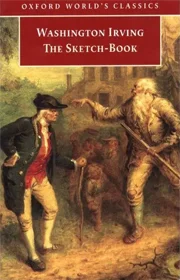
“The Sketch Book” by Washington Irving is a collection of stories and essays that paints a colorful picture of early 19th-century America. Through tales like “Rip Van Winkle” and “The Legend of Sleepy Hollow,” Irving explores themes like American identity and the passage of time with a touch of humor and folklore. Set in the Dutch-influenced Hudson Valley of New York, the book introduces memorable characters against a lively backdrop. Irving’s storytelling has left a lasting impact, influencing other writers and contributing to the recognition of American literature worldwide. In a nutshell, it’s a delightful journey into the past, offering a glimpse of what life was like in early America.
Read The Sketch Book Flipbook:
Listen to The Sketch Book Audiobook:
Title: The Sketch Book
Author: Washington Irving
Genre: Collection of Essays and Short Stories
Publication: Originally published serially between 1819 and 1820
Notable Works: Includes famous stories such as “Rip Van Winkle” and “The Legend of Sleepy Hollow.”
Style: Blends humor, satire, and elements of folklore.
Setting: Stories often set in the Dutch-influenced Hudson Valley of New York.
Themes: Exploration of American identity, folklore, and the effects of time.
Impact: Contributed to the creation of an American literary tradition and gained international acclaim.
Legacy: Helped establish Irving as one of the first American writers to achieve literary recognition in Europe.
Influence: Inspired later writers and adaptations, including various film and television adaptations of “Rip Van Winkle” and “The Legend of Sleepy Hollow.”
Transatlantic Writing: “The Sketch Book” was written partly in England, where Washington Irving spent several years. It’s a unique example of transatlantic literature, reflecting both American and European influences.
Early Literary Celebrity: The success of “The Sketch Book” made Washington Irving one of the first American literary celebrities. His popularity extended to Europe, where he gained recognition alongside established European authors.
Historical Impact on Christmas Customs: The essays in “The Sketch Book,” particularly “Christmas Eve” and “Christmas Day,” played a role in shaping American Christmas traditions. Irving’s portrayal of festive celebrations contributed to the popularization of certain customs, including the concept of celebrating Christmas with family and friends.
Cultural Term: “Gotham”: Washington Irving’s humorous use of the term “Gotham” to refer to New York City became widely adopted. Over time, “Gotham” evolved into a popular nickname for the city, reflecting Irving’s lasting influence on its cultural identity.
Early Use of Pseudonyms: The use of the pseudonym Geoffrey Crayon for “The Sketch Book” was not uncommon in the 19th century. Authors often employed pen names for various reasons, such as maintaining anonymity or creating a distinct literary persona.
European Folklore Inspiration: The idea for “Rip Van Winkle” was inspired by a German folktale that Irving reportedly heard while traveling in Sauerland, Germany. This cross-cultural influence adds an interesting layer to the creation of one of America’s iconic literary characters.